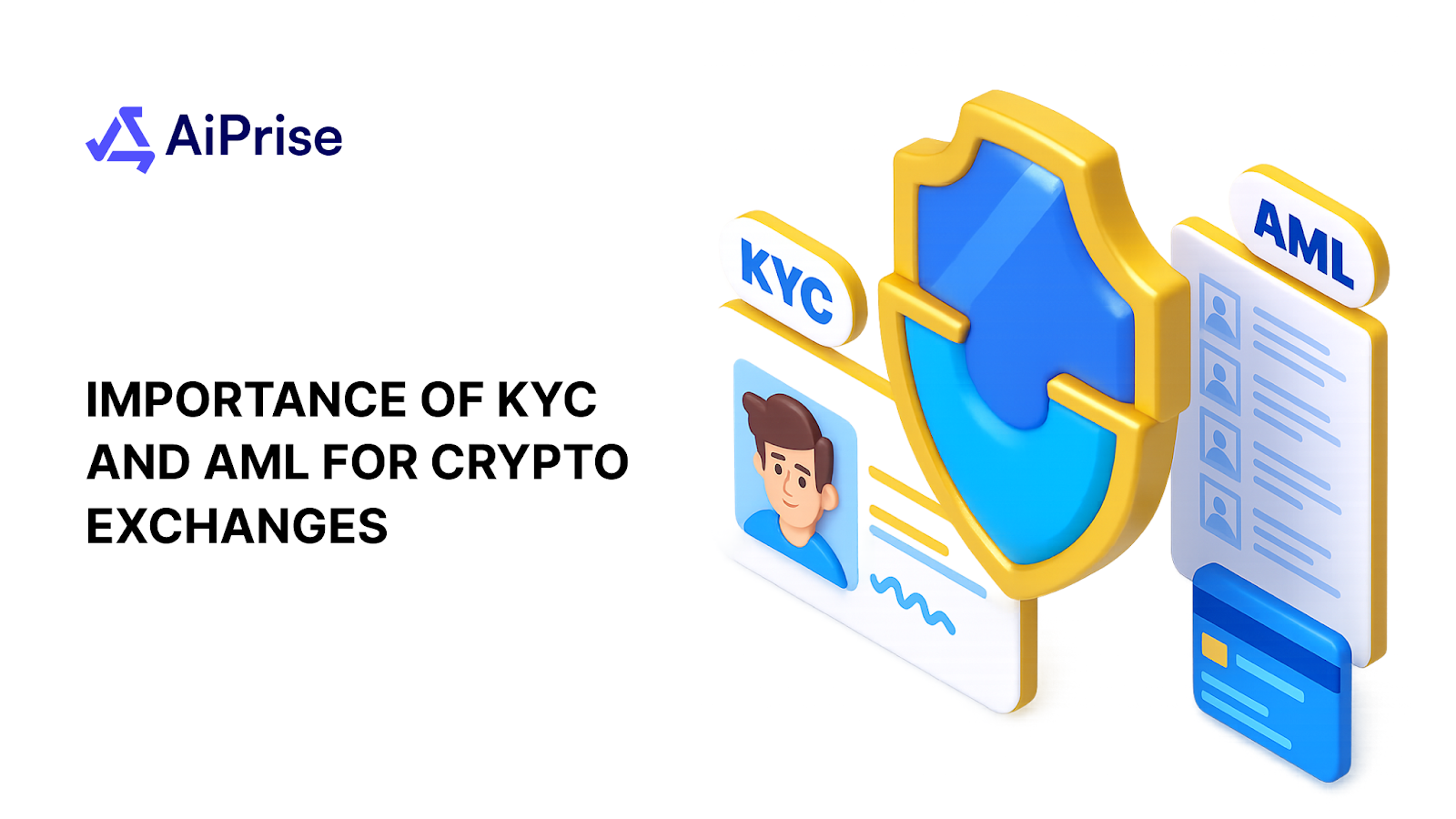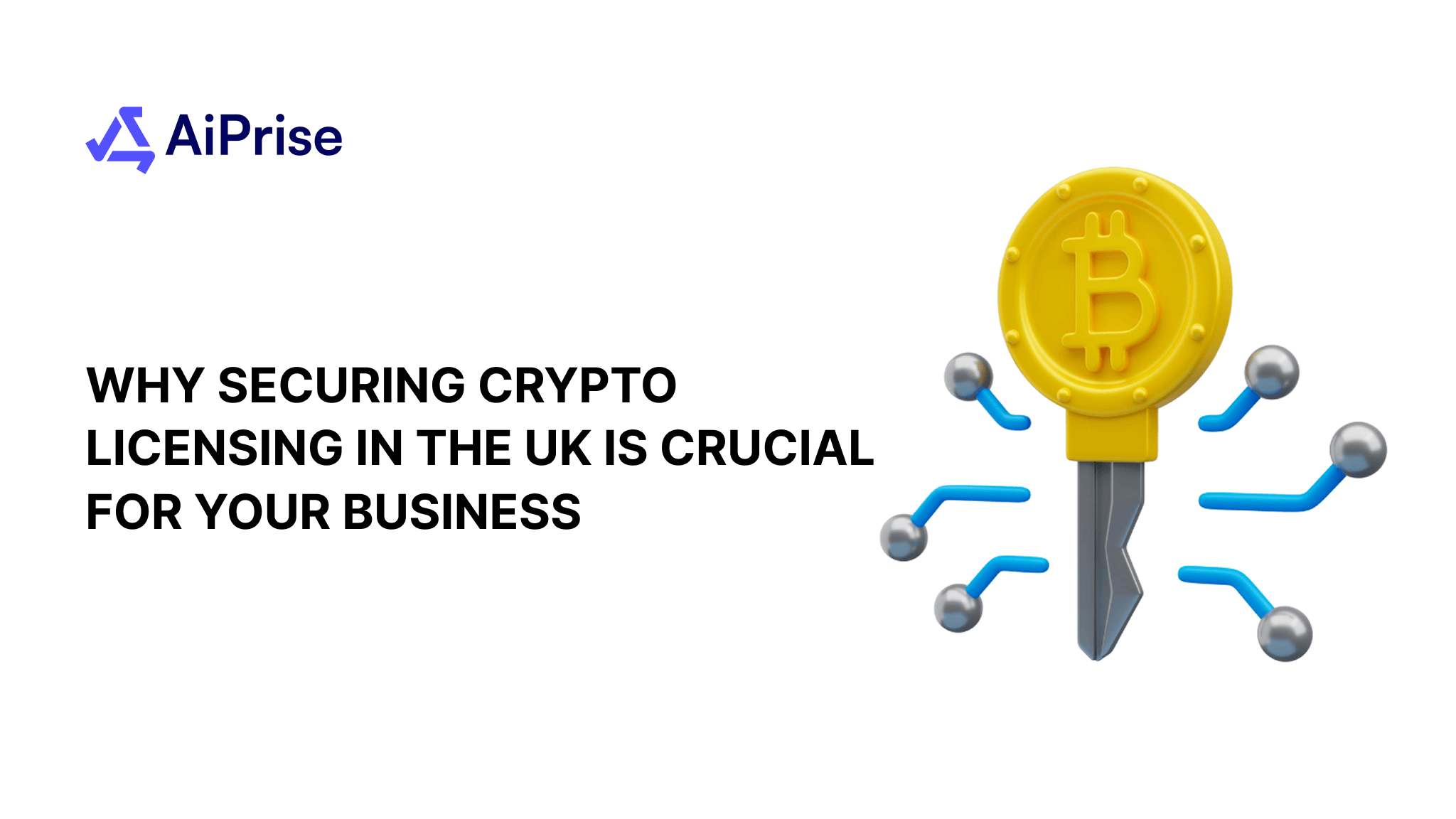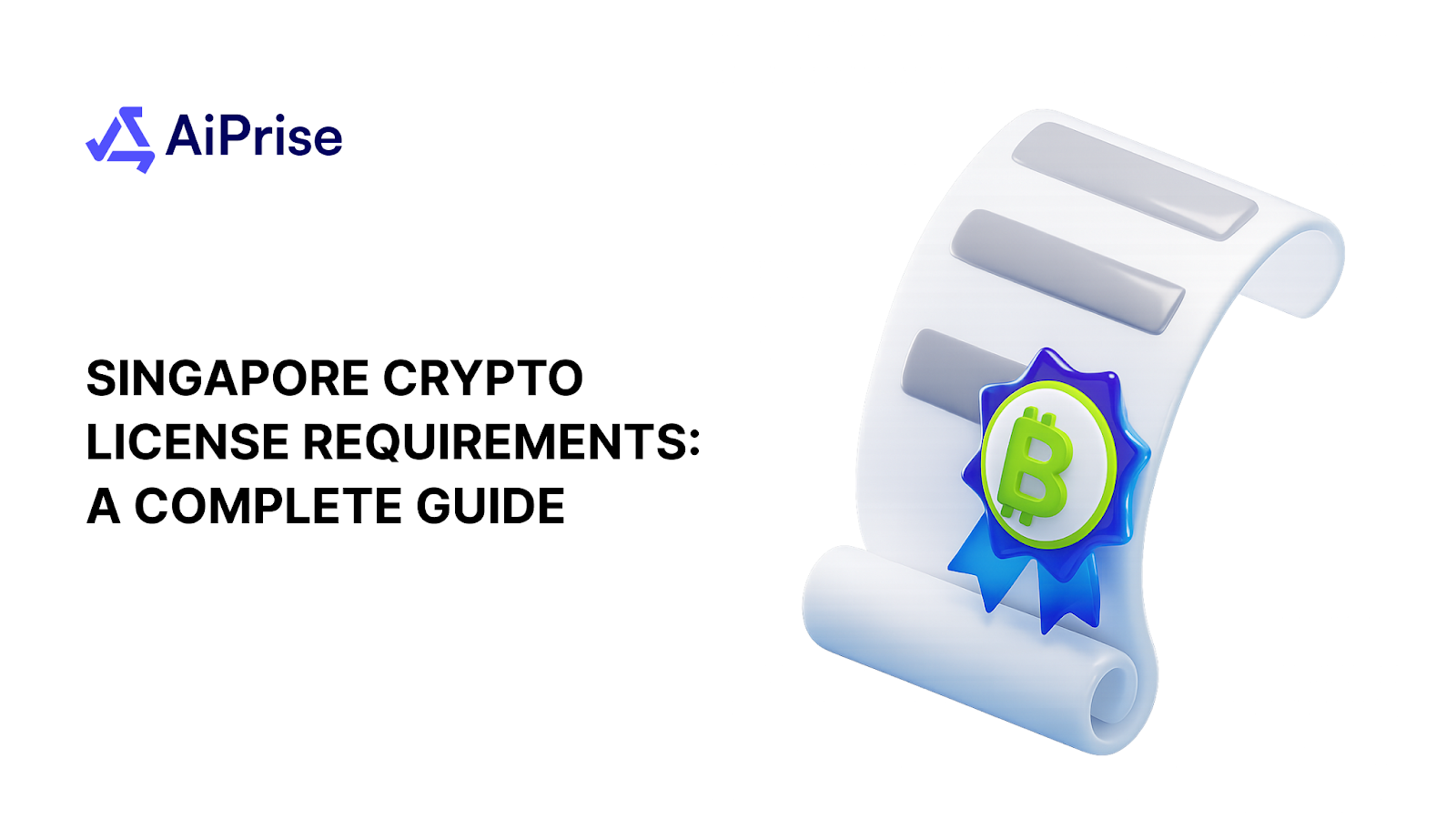AiPrise
9 mins read
June 26, 2025
Why Manual Compliance Checks Are Outdated

Key Takeaways










If your business operates in sectors such as finance, payments, or cryptocurrency, compliance is probably at the forefront of your daily activities. Compliance ensures that your company adheres to regulations, thereby reducing legal risks and enhancing its credibility.
Though manual compliance methods were the norm, they are now widely recognized as outdated and expose your organization to unnecessary risks. Despite this, 55% of compliance teams still conduct reviews manually. As regulations become increasingly complex, transitioning to more advanced compliance methods is inevitable for maintaining a competitive and secure business environment.
This blog will explore why manual compliance checks are no longer sustainable, the hidden costs they incur, and how embracing automation can transform your compliance strategy.
What is Manual Compliance?
Manual compliance refers to handling regulatory requirements without the aid of automation, relying primarily on human effort and expertise. It involves verifying identities, checking business documents, maintaining compliance records, and manually reporting compliance status.
Here are the crucial aspects typically involved in manual compliance checking:
- Physically reviewing identification documents (such as passports, driver’s licenses, and utility bills).
- Manually validating business licenses and incorporation documents.
- Entering customer data into spreadsheets or paper records.
- Regularly checking regulatory updates and applying changes manually.
- Creating compliance reports through manual data aggregation.
While once a common and straightforward approach, organizations now recognize the limitations of manual compliance. As it heavily depends on human intervention at every stage, it becomes inherently cumbersome, prone to errors, and inefficient as businesses grow and regulatory complexity increases.
Despite these clear limitations, many businesses continue to rely on manual compliance for various reasons, which we’ll explore in the following section.
Why Are Businesses Still Using Manual Compliance?
Many organizations still prefer manual compliance for several understandable yet outdated reasons. The resistance to change often stems from internal habits, resource allocation, or misconceptions about automation.
- Familiarity: Many businesses continue to use manual methods because they have become accustomed to them over time. This familiarity breeds comfort, making change seem unnecessary or risky.
- Perceived Cost Savings: Organizations sometimes perceive manual compliance as cost-effective initially, mainly because it avoids upfront investments in new technologies.
- Misconceptions about Automation: Companies often mistakenly believe automation is overly complex or prohibitively expensive. This misconception creates reluctance to adopt automated solutions.
However, these short-term perspectives overlook the long-term inefficiencies, hidden costs, and compliance risks associated with manual methods. When weighed against the true expenses and dangers of manual compliance, transitioning to automation is far less complex or costly than often assumed.
What Problems Do You Face with Manual Compliance?

When your organization relies on manual compliance, several persistent issues inevitably arise, affecting operational efficiency and risk management:
- Time-Consuming Processes: Manual checks, verifications, and data entry require significant amounts of time, diverting critical resources from more productive tasks.
- Increased Human Errors: Manual entries and verifications are highly susceptible to mistakes, leading to inaccuracies, potential non-compliance, and subsequent regulatory action.
- Difficulty Keeping Updated: Regulations evolve frequently, making manual tracking and implementation of these changes both cumbersome and prone to error.
- Vulnerability to Fraud: Manual compliance lacks sophisticated monitoring, making it easier for fraudulent activities to go unnoticed.
- High Operational Costs: The persistent labor demands and administrative overhead associated with manual compliance significantly impact your operational budget.
Each of these problems presents clear indicators that manual compliance is unsustainable for modern, growth-focused businesses. But how does it cost your business? Let’s find out!
What Are the Real Costs of Manual Compliance?
Manual compliance comes with various hidden yet significant costs that negatively affect your organization's bottom line and reputation:
- Labor and Administrative Expenses: Constant manual oversight necessitates extensive staffing, resulting in significant ongoing costs.
- Financial Penalties: Mistakes or oversights due to manual processes can lead to costly fines from regulators.
- Reputation Damage: Compliance failures directly affect client trust and brand reputation, potentially causing long-term harm to your business relationships.
- Lost Business Opportunities: Slow response times and inefficiencies hinder your ability to capitalize on new market opportunities promptly.
When accurately accounted for, these costs reveal manual compliance as a far more expensive approach than initially perceived. Automated solutions, by contrast, offer a viable path to significant savings and enhanced reliability.
Why Should You Consider Automated Compliance?

Automated compliance offers several transformative advantages, making it essential for any modern organization:
- Reduced Errors: Automation significantly decreases the likelihood of human error, increasing data accuracy.
- Improved Efficiency: Automated systems expedite processes, freeing resources for strategic initiatives.
- Real-Time Compliance: Systems continuously monitor regulatory changes, automatically updating to ensure ongoing compliance.
- Cost Reduction: Over time, automation streamlines compliance-related processes, resulting in reduced expenditures.
- Scalability: Automated compliance easily adapts to your growing business needs without additional significant investments.
Considering these advantages, automation represents a clear upgrade from manual compliance, ensuring your organization's regulatory processes remain efficient, accurate, and secure.
Also Read: How AI-Powered Compliance is Transforming Risk Management?
How Automation Keeps Your Business Compliant and Secure?
Automation goes beyond replacing human effort. It introduces smart checks powered by artificial intelligence and machine learning. These systems not only run manual compliance checks faster but also learn from patterns to detect anomalies, potential fraud, and suspicious activities.
Here’s how automation protects your business:
- Verifies identities and businesses in seconds.
- Flags inconsistencies across data sources immediately.
- Ensures ongoing monitoring with minimal effort.
- Keeps your systems aligned with the latest regulations.
When compliance becomes continuous and intelligent, your business becomes more resilient.
While automation enhances compliance processes, businesses must also recognize the signs that indicate when it’s time to implement these advanced systems.
What Are The Signs That Your Organization Needs Automated Compliance?
You may not realize how manual compliance checks are holding you back until the signs start showing. If any of these apply, it’s time to consider automation:
- You struggle to keep up with regulatory updates.
- Your team spends too much time on document reviews and approvals.
- Mistakes in compliance reporting are becoming more frequent.
- Customer onboarding is slow and inconsistent.
- Audit preparation drains time and resources.
These challenges grow as your operations expand. Automated systems solve them at scale.
How Can AiPrise Help You Move Beyond Manual Compliance?

AiPrise offers modern compliance solutions designed for today’s challenges. Whether you're in fintech, crypto, payments, or financial services, AiPrise helps you eliminate outdated manual compliance checks with AI-powered tools.
Here’s what aiPrise brings to your business:
- Global KYC and KYB Verification: Instantly verify identities and businesses across multiple databases and jurisdictions.
- Advanced AML Capabilities: Detect and prevent money laundering activities using intelligent risk detection models.
- Regulatory Updates in Real-Time: Stay compliant with changing laws across the U.S. and globally.
- Seamless Integration: AiPrise systems work with your existing workflows, so you don’t need to start from scratch.
- Scalable Infrastructure: As your business grows, AiPrise grows with you, supporting complex compliance needs with ease.
- Smart Document Analysis: AiPrise's AI-powered system swiftly identifies and extracts essential information from various documents, such as incorporation certificates and proof of address, ensuring accuracy and compliance.
- Automated Sanctions Screening: The platform instantly checks individuals and entities against global sanction lists, applying intelligent relevance scoring to identify high-risk connections and ensure adherence to regulatory requirements.
- Enhanced Due Diligence (EDD) Reporting: AiPrise automates the generation of comprehensive EDD reports, streamlining the process and reducing manual effort, which is crucial for onboarding high-risk clients.
- Continuous Regulatory Monitoring: The system provides real-time updates on regulatory changes, ensuring your compliance processes remain aligned with the latest legal requirements.
With AiPrise, you can replace manual compliance checks with streamlined, automated systems that reduce cost, improve accuracy, and strengthen compliance.
Conclusion
Manual compliance checks once worked. But they’ve become a liability in a tech-driven environment. They drain time, invite errors, and open doors to non-compliance. If you’re still relying on outdated methods, now is the time to change.
Automated compliance doesn’t just remove pain points—it transforms how your business operates. With tools like AiPrise, you get more than automation. You gain confidence, accuracy, and a future-ready approach to compliance.
Ready to eliminate the inefficiencies of manual compliance checks? Book a Demo today to see how AiPrise’s automated solutions can transform your compliance strategy, reduce errors, and streamline your processes.
Frequently Asked Questions
1. What are manual compliance checks?
Manual compliance checks involve the process of verifying and ensuring adherence to regulatory standards using human intervention. This includes tasks such as reviewing identification documents, verifying financial records, and ensuring accurate documentation for regulatory reporting purposes.
2. Why is manual compliance outdated?
Manual compliance is outdated because it is slow, error-prone, and unable to keep up with the rapidly changing regulatory environment. As businesses grow and compliance requirements become more complex, manual processes struggle to maintain accuracy, efficiency, and scalability, increasing the risk of non-compliance and costly errors.
3. What are the risks of relying on manual compliance?
Relying on manual compliance exposes businesses to a range of risks, including human error, delayed processes, compliance breaches, and increased operational costs. Additionally, companies that use manual methods may struggle to stay updated with evolving regulations, thereby increasing their risk of fines or reputational damage.
4. How does automated compliance work?
Automated compliance utilizes software and advanced technology to streamline regulatory tasks that were previously performed manually. This includes identity verification, regulatory reporting, and monitoring for suspicious activity. Automation helps ensure real-time compliance with minimal human intervention, reducing errors and enhancing overall efficiency.
5. What are the benefits of automated compliance over manual methods?
Automated compliance offers several advantages, such as faster processing, reduced human error, real-time updates on regulatory changes, and lower operational costs. By replacing manual methods, businesses can ensure continuous compliance, improve accuracy, and scale operations without the bottlenecks caused by human-driven checks.
6. When should a business transition from manual to automated compliance?
A business should consider transitioning to automated compliance when manual processes become inefficient, prone to errors, or difficult to scale and manage. If compliance-related tasks begin to consume an excessive amount of time or resources, or if the company faces heightened regulatory demands, it's time to consider automated solutions.
You might want to read these...

Aiprise has helped streamline our KYB (Know Your Business) flow in 100+ countries. No other tool comes close.





Speed Up Your Compliance by 10x
Automate your compliance processes with AiPrise and focus on growing your business.





























